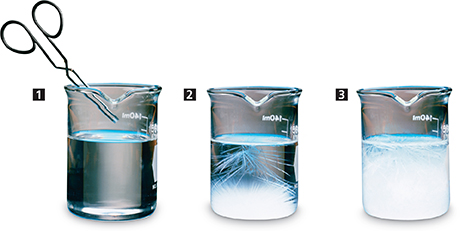Saturated Solutions
Table sugar is very soluble in water. At 20°C, 203.9 grams of table sugar will dissolve in 100 grams of water. What will happen if you try to dissolve more than 203.9 grams of table sugar in the same amount of water? The extra sugar will not go into solution. The solution is already saturated. A saturated solution is one that contains as much solute as the solvent can hold at a given temperature. When a solution is saturated, the solvent is “filled” with solute. If you add more solute, it will not dissolve.
Unsaturated Solutions
A solution that has less than the maximum amount of solute that can be dissolved is called an unsaturated solution. For example, many of the beverages you drink are unsaturated solutions of sugar in water. If you sweeten your lemonade with a spoonful of sugar, and the sugar dissolves, you know that the solution is unsaturated. As long as the amount of solute is less than the solubility at that temperature, the solution is unsaturated.
Figure 9 A supersaturated solution is analogous to the overloaded man shown above. One wrong step, and he might drop all the boxes. In the photo sequence below, a single crystal of sodium acetate, NaC2H3O2, is added to a supersaturated solution of sodium acetate in water. The excess solute rapidly crystallizes out of the solution.

Supersaturated Solutions
Have you ever tried to carry more books than you can easily manage? If you're not careful, you'll drop them all because the load is so unstable. Similarly, a solvent can sometimes dissolve more solute than you might expect, based on its solubility. Solubility is given at a specific temperature, such as 20°C. If you heat a solvent above that temperature, more solute may dissolve. If you then carefully cool the solvent back to 20°C without jarring it, you may be able to keep the extra solute in solution.
A supersaturated solution is one that contains more solute than it can normally hold at a given temperature. Supersaturated solutions are very unstable. If even a tiny crystal of the solute falls into a supersaturated solution, the extra solute can rapidly deposit out of solution, as shown in Figure 9.

How does a supersaturated solution differ from a saturated solution?





